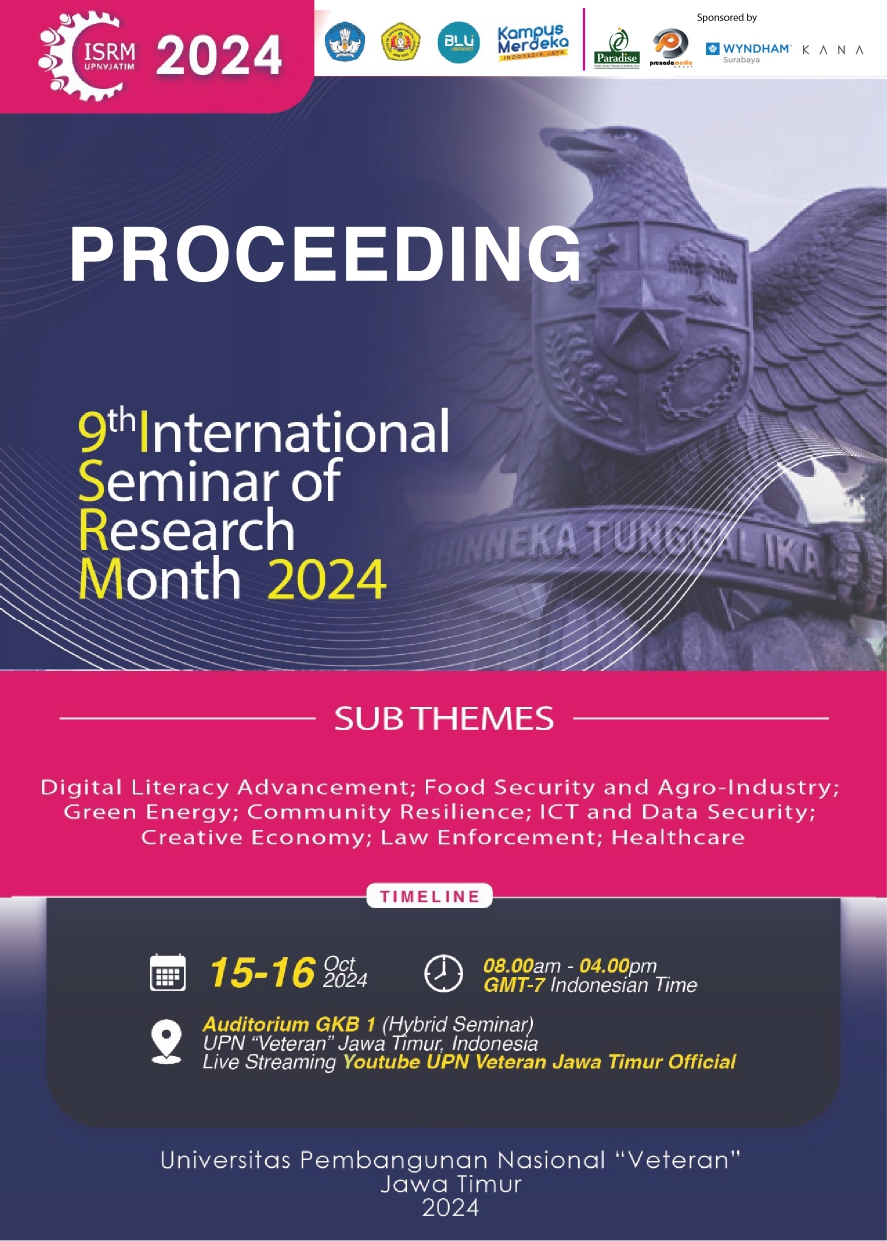Integration of Prefabrication and Modular Construction Methods in Accelerating of Implementation of Post-Disaster Home in Lumajang, Indonesia
DOI:
https://doi.org/10.11594/nstp.2025.4733Keywords:
Post-disaster home, prefabricated, modular buildings, building materials, building panelsAbstract
Post-disaster is a condition that requires immediate demand for housing to meet the housing needs of disaster victims. The demand for large numbers of post-disaster housing needs will require strategies for time efficiency and effectiveness in arranging building dimensions, building shapes, use of materials, and appropriate construction systems so that implementation mechanisms and use of materials do not produce a lot of waste. This is important because disaster conditions will require the provision of houses for disaster victims in a relatively short time. Meanwhile, conventional building procurement mechanisms often encounter problems regarding the length of the construction process and the large amount of production waste during work implementation in the field. So a more competitive productivity performance in housing procurement is needed to meet the need for large quantities of housing in a short time. The use of procurement methods using prefabrication methods and modular systems needs to be integrated comprehensively so that the speed of construction implementation and the occurrence of construction waste can be minimized. In this research the author will integrate two building techniques, namely fabrication techniques and modular building systems by making building panels that can be produced simultaneously, then assembled in the field using a pre-arranged fabrication system. In the process of assembling the modular building in the form of panels, several relatively light building materials are used, namely using a bar frame construction with classic C-75 Smartruss Canal Material and the covering is 9 mm thick Calciboard. Meanwhile, the roof uses frame construction with a roof covering in the form of x-trap lysaght material 5 mm thick.
Downloads
References
Abulnour, A. H., (2014), The post-disaster temporary dwelling: Fundamentals of provision, design and construction, Housing and Building National Research Center (HBRC) Journal (2014) 10, 10-24. http://dx.doi.org/10.1016/j.hbrcj.2013.06.001
Bertram, N., Fuchs, S., Mischke, J., Palter, R., Strube, G., & Woetzel, J., (2019), Modular construction: From projects to products, Capital Projects and Infrastructure, McKinsey & Company.
Beulah, F., Sudhakar, R. & Arivalagan, S., (2023), Challenges faced in prefabrication or modular construction. International Journal for Research in Applied Science & Engineering Technology (IJRASET) 10(1), 168-178, https://doi.org/10.22214/ijraset.2022.39789
Iqbal, M. N. M., & Ujianto, B. T., (2021), Alternatif desain rumah tumbuh modular sistem prefabrikasi risha. Pawon: Jurnal Arsitektur, 01(5), 53-62. https://doi.org/10.36040/pawon.v5i1.3319
Hyun, H., Kim, H., Lee, H. S., Park, M., & Lee, J., (2020), Integrated design process for modular construction projects to reduce rework. Sustainability, 12(2), 530; https://doi.org/10.3390/su12020530
Ishirugi, P. G. T. (2023). Analysis of modular construction techniques advantages and disadvantages. Dissertation in Specialization in Building Construction, Department of Civil Engineering, Faculty of Engineering, University of Porto, Porto, Portugal, 1-125.
Lia, L., Chang-Richardsa, A., Bostonb, M., Elwooda, K., & Huttc, C. M. (2023). Post-disaster functional recovery of the built environment: A systematic review and directions for future research. International Journal of Disaster Risk Reduction, 95(2),103899. https://doi.org/10.1016/j.ijdrr.2023.103899
Li, N., Feng, Y., & Liu, J. (2023). Xiongjin Ye 3 and Xingxing Xie 3, research on the modular design and application of prefabricated components based on KBE. Buildings, 13(12), 2980; https://doi.org/10.3390/buildings13122980
Lu, W., Chen, K., Xue, F., & Pan, W., (2018). Searching for an optimal level of prefabrication in construction: An analytical framework. Journal of Cleaner Production, 201, 236-245, https://doi.org/10.1016/j.jclepro.2018.07.319
Palcis, R. J. P., (2023). Examining the Advantages of Prefabrication and Modular Construction Techniques for Enhancing Speed, Efficiency, and Sustainability in Construction Projects. Research Publication February, 2023, 1-5. doi: 10.13140/RG.2.2.25678.54081
Robey, M. W., & Issa, R. R. A., (2015), Implementation of prefabrication and modular offsite construction using BIM and lean construction techniques. Modular and Offsite Construction (MOC) Summit Proceedings, 322-329. http://dx.doi.org/10.29173/mocs162
Zuhri, S., Ghozali, I., & Saifuddin, J. A., (2022), Provision of modular system home for post-disaster communities. 7st International Seminar of Research Month 2022, 2023, 1-6. http://dx.doi.org/10.11594/nstp.2023.3301
Downloads
Published
Conference Proceedings Volume
Section
License

This work is licensed under a Creative Commons Attribution 4.0 International License.
Authors who publish with this proceedings agree to the following terms:
Authors retain copyright and grant the Nusantara Science and Technology Proceedings right of first publication with the work simultaneously licensed under a Creative Commons Attribution License that allows others to share the work with an acknowledgement of the work's authorship and initial publication in this proceeding.
Authors are able to enter into separate, additional contractual arrangements for the non-exclusive distribution of the proceedings published version of the work (e.g., post it to an institutional repository or publish it in a book), with an acknowledgement of its initial publication in this proceeding.
Authors are permitted and encouraged to post their work online (e.g., in institutional repositories or on their website) prior to and during the submission process, as it can lead to productive exchanges, as well as earlier and greater citation of published work (See the Effect of Open Access).














